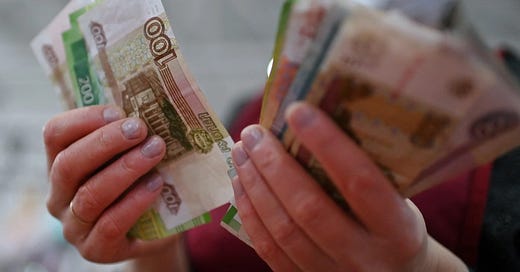Vladimir Putin’s Russia Wins a Battle Against the West in the Ruble War.
Russian gas exports to Europe play a decisive role in Putin's favor.
Even before the beginning of the Russian invasion of Ukraine, Joe Biden had already ruled out any American military intervention in Ukraine. The idea is to avoid at all costs a direct military confrontation between America and Russia. This would be synonymous with a third world war, and this is a worst-case scenario that everyone wants to avoid. Even Vl…
Keep reading with a 7-day free trial
Subscribe to Sylvain Saurel’s Newsletter to keep reading this post and get 7 days of free access to the full post archives.




